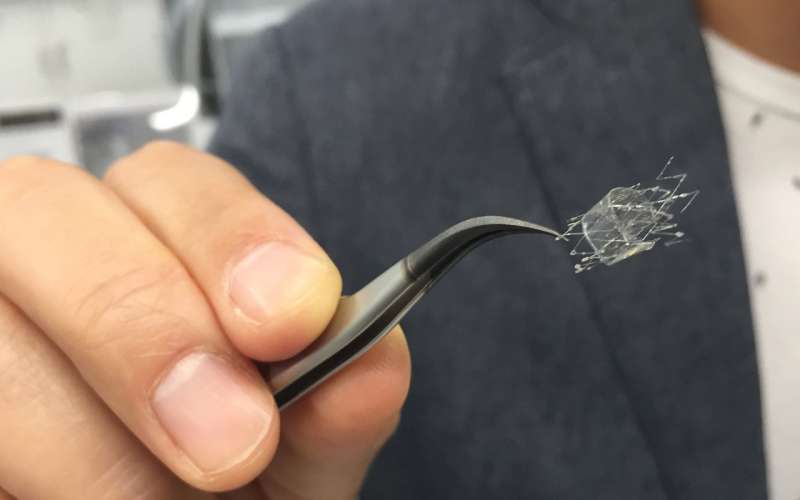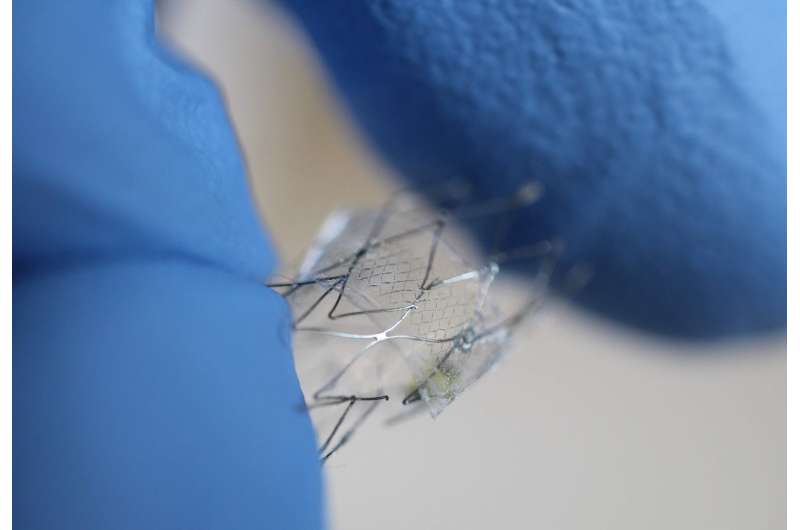Inventors at Georgia Tech have developed a wireless implantable biosensor system to monitor blood flow during a cerebral aneurysm treatment. The system is comprised of a miniaturized capacitive sensor and inductive coil, and can be used for integration into a circuit-less and battery-less functional device. The optimized wireless system demonstrates the longest detection range, based on the ratio of the readout distance and sensor cross-sectional area among the reported inductive coupling methods to date. Quantitative analysis of transient sensor signals allows accurate identification of a resonance frequency, which will offer real-time monitoring of hemodynamics of blood flow in cerebral aneurysm with an abnormal focal dilation.
- Minimally invasive: minimal impact on hemodynamics (dynamics of blood flow)
- Flexible and stretchable: able to conform to complex vessel geometry
- Longer range: improved wireless detection range
- Monitoring of treatment process of cerebral aneurysms
- Monitoring abdominal aortic aneurysm treatment and parameters in other blood vessels
Un-ruptured cerebral aneurysms exist in as many as 6% of the population in the world, introducing risk of serious damage if not properly treated. Cerebral aneurysms result from weakened sections of blood vessels, allowing abnormal blood flow into a sac. Current standard of care involves invasive treatment via clipping or embolization in the targeted aneurysm sacs. Although post-treatment monitoring of blood flow is recommended, the existing practice using angiography is costly and invasive. Even though some devices show a possible method of a sensor integration for active monitoring of hemodynamics, they still require cumbersome tethering with an external data acquisition system.

A flow sensor is shown here on a stent backbone. Credit: John Toon, Georgia Tech

With gloved fingers for scale, a flow sensor is shown here on a stent backbone. Credit: Woon-Hong Yeo, Georgia Tech
